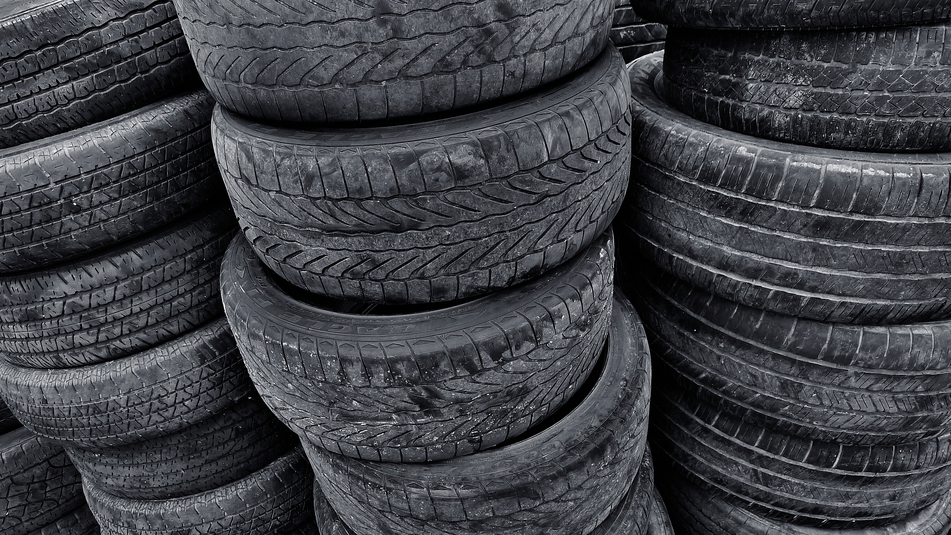Tires are an essential part of car ownership and require regular care, such as proper pressure and seasonal rotation, for maximum life. Eventually, tires must be replaced, and many people simply pay a recycling fee without wondering what happens to the old ones or considering the possibility of retreading. There are several benefits to recycling old tires, which are explained below.
Waste Reduction
Three-hundred million tires are used in the United States each year. The majority of landfills no longer allow dumping of tires because they are toxic and take up a great deal of space. Old tires also trap gasses under the ground, which can travel throughout a landfill. Taking tires to be recycled reduces this environmental damage and lowers the overall carbon footprint. This is extremely important in the age of global warming, where shifting weather patterns are drastically changing the ways people live and work.
Reusability
The best reason to recycle tires is the number of other products that can be produced from the rubber. They make durable swings for children and great shock-absorbing surfaces for playgrounds. Pieces of old tires are used in construction, railroad beds and paved roads and make up a large part of doormats, sandals and crash barriers on the highway. Old rubber can reused in so many different ways, there is no reason for it to be piled up in a backyard or landfill.
Public Health
When tires are discarded and allowed to build up, they become attractive nesting spots for insects and rodents. Both present a health hazard by spreading diseases that cause illness in pets and humans. Mosquitoes are especially drawn to tires and can carry the West Nile virus, along with malaria and encephalitis. This is yet another reason why landfills do not allow the dumping of old tires as they are very unattractive and detract from the beauty and value of the land which they are placed. It is better to recycle the tires and put them to better use. This will help ensure optimal health for the general public.
Fire Danger
Rubber is very flammable and may burn for many months or even years, once it catches fire. Tire fires are challenging to put out and very costly to clean up afterward. Burning tires release many toxins into the air, including heavy metal, oil and gasoline. The smell is overwhelming, and the thick, black smoke that is produced causes respiratory distress. Once melted down by the heat, the old tires cause chemicals to leach into the ground, which contaminates ecosystems and the water supply. With many sources of drinking water endangered or depleted around the planet, it makes sense to guard against its loss whenever possible.
Lower Energy Use
Recycling old tires results in decreased use of fossil fuels. It takes 22 gallons of oil to produce a single tire. Making the choice to retread old tires instead of replacing them helps to conserve this diminishing resource. Certain manufacturing processes are now using discarded tires as an energy source by burning them in a careful, controlled manner. This is called “tire-derived fuel” and it can produce as much energy as coal and oil. This is a big step forward in a world that will soon need alternative sources of energy.
In an age where preserving the planet’s resources is more important than ever, recycling old tires makes sense. The products made from tire recycling are practical and long-lasting and set a positive example for future generations that will face increasing ecological challenges. This will remain true long after the age of the fossil fuel-powered automobile has passed.
